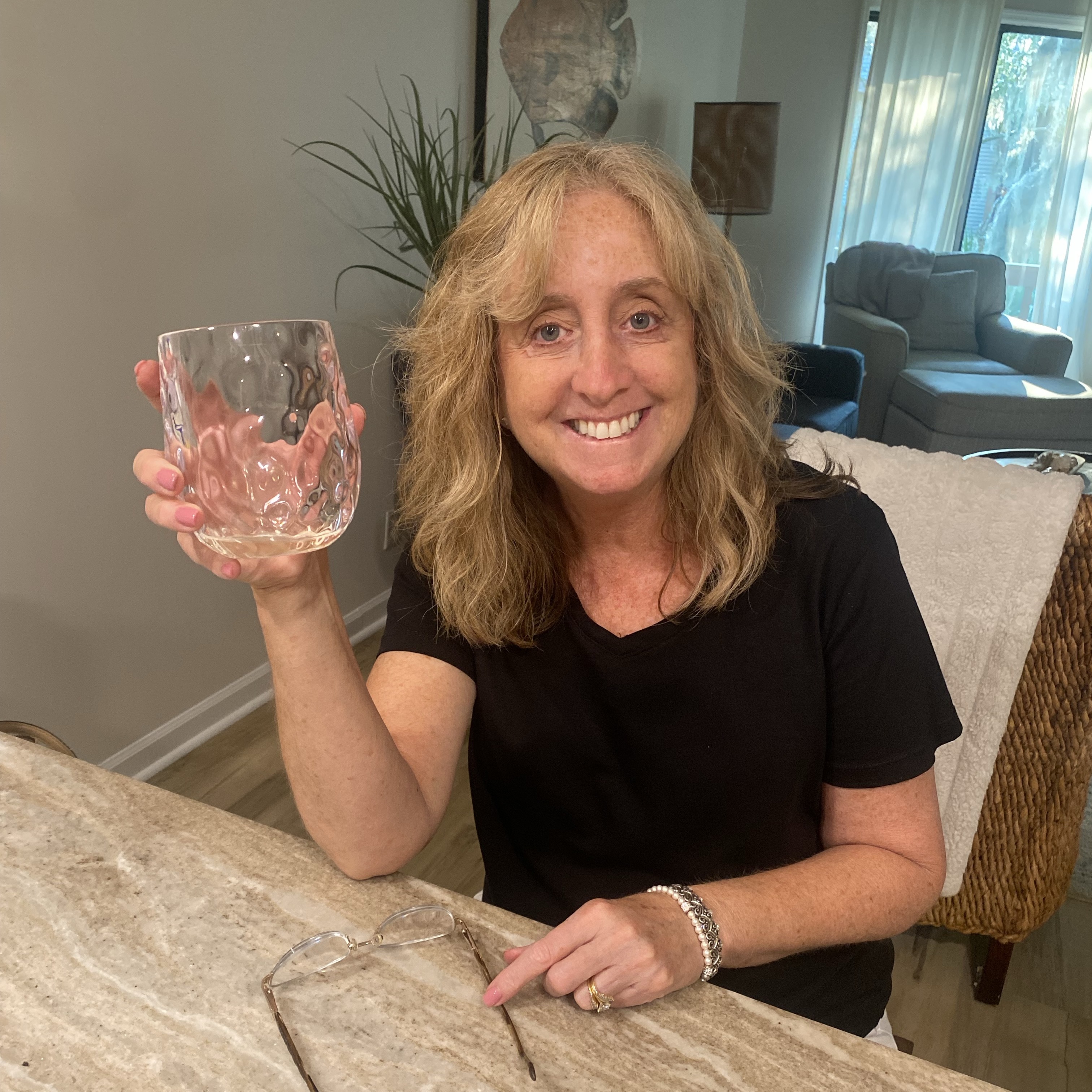Emma Reichart
Ca' Rozzeria
Barberino Val D'Elsa Chianti Classico Sangiovese 2019
Casa Emma
Vignalparco Chianti Classico Sangiovese Blend 2010
Very nice Chianti Classico. Lots of dark red fruit with good earth and leather and excellent acid. Probably would have guessed a bit older, actually, based on the fact that the secondary is poking through. Nice wine. — 6 years ago
Domaine de Triennes
Vin de Pays du Var Cinsault Rosé Blend 2017
Emma found it for $15 on sale from $20. Really good and dry — 8 years ago
Botromagno
Murgia Nero di Troia
Machello with emma — 8 years ago
TuDream
Casa Emma Cortine Bianco Toscano Trebbiano Pinot Bianco
Casa Emma Chardonnay — 4 years ago
Emma Reichart
Gewürztraminer 2020
“This is the one we liked…” — 4 years ago
Vega Aixala
Emma Carinyena
Perfect orange — 6 years ago
Casa Emma
Rosa di Emma 2018
Very lightly structured with notes of rose, violet, and soft strawberry. — 6 years ago
Krug
Brut Rosé Champagne Blend
There are certain occasions that call for Krug Rosé. So, HBTM! The bottle was corked in the summer of 2014. It’s a blend of 45 reserve wines with the oldest being from 2007 and the youngest 2002. This is why I think Champagne Makers are some of the most talented people making wine. They are constantly blending up to 100 plus wines to bring that bottle to bottle and year to year branded flavor of consistency. On the nose; red & pink spring flowers, cherries, strawberries, watermelon, black cherry, black raspberries, notes of blood orange citrus, baked bread, soft volcanic mineral and elegant chalkiness. The palate is always ridiculously delicate. Micro bubbles, silky rich texture with beautiful soft acidity. The palate fruits are similar to the nose; rich & ripe cherries, strawberries watermelon, black cherry, black raspberries, notes of blood orange citrus with hints of marmalade. Red & pink spring flowers, baguette crust, soft powdery minerals that give the palate a slight sting and super powdery chalkiness done just right. The finish is beautifully rich, textured, revealing itself in layers and lasts minutes. Photos of; Founder Joseph Krug, House of Krug, Winemaker Eric Lebel, Krug’s Clos du Mesnil, a small plot of 1.85 hectares of Chardonnay...one of the world’s greatest vineyards and their salon tasting room. Producer history & notes...Krug was founded by Joseph Krug in 1853. They are based in Reims, the main city in France’s Champagne region. It is one of the famous Champagne houses that formed part of the Grande Marques. Today the house is majority owned by the multinational conglomerate LVMH, which owns Moët Hennessy, Louis Vuitton S.A. and who’s wine producer portfolio includes other well known wine brands such as; Moët & Chandon, Veuve Clicquot, Château d'Yquem, Ruinart & Cheval Blanc, Dom Perignon and many others. Despite LVMH's majority ownership, the family is still actively involved in all the key decisions of the house but does not manage the day-to-day operations. Joseph Krug was born Johann-Joseph Krug, a butcher’s son, in Mainz, on the Rhine in 1800 when the city was part of the Napoleonic Empire. Having dispensed with the name Johann, he left Mainz in 1824 and in 1834 moved on to Paris. Germans were in demand in France as accountants and bookkeepers. So, Joseph joined Champagne Jacquesson in Châlons-sur-Marne. He spent eight years with Jacquesson. His work took him beyond accountancy. He went around Europe testing the market and assessing criticism from wine sellers and customers. He learned about composition and taste so that by 1840 he already seemed to have been blending Champagne for at least one other house. In 1841, he married Emma-Anne Jaunay. The daughter of a French hotelier based in London’s Leicester Square. The following year their son Paul Krug was born. In 1842 he moved to Reims and following a year later, Krug et Cie was founded with his partner, Hyppolite de Vivès. Joseph was fluent in French, English and German and even spoke some Russian, putting the company in position to exploit key overseas markets. Joseph died in 1866 and was succeeded by his son Paul Krug, who had been trained by his father to takeover. Joseph under the supervision of Paul, Krug was established as a Grande Marque. By the 1880s the prestige of Krug was acknowledged in the United Kingdom and became the primary overseas market for Champagne. In 1866, the House moved into Rue Coquebert, in Reims as it remains. After Paul’s death in 1910, he was succeeded by his son, Joseph Krug II. However, during World War I Joseph II was taken prisoner and his wife Jeanne played a key role in the House at a time when the Western Front divided the region between the Allies and the Germans. After the war, Joseph II’s slow recovery led to his nephew Jean Seydoux becoming joint manager in 1924. In that decade, the Krug 1926 and 1928 vintages were created, which have been considered by critics to be amongst the greatest Champagnes. Lawyer and wine writer Maurice Healey declared “Krug” the king of all Champagnes. Further, “that the 1928 Krug was the best wine made in the present century.” By the mid-1930s, Paul Krug II, the son of Joseph II, was active in the business and would become head of the House from 1959 to 1977. His father died in 1967, by which time he was, according to Patrick Forbes, “one of the most popular and respected figures in the Champagne district.” In 1962 Henri Krug, the son of Paul II, joined the management, as did his brother Remi three years later. Their arrival was followed by a series of innovations, including extensions in the range of Champagnes. In 1979, for the first time, a graduate winemaker joined the House. In January 1999, the House became part of LVMH and by 2007, the brothers, while remaining on the tasting committee, had stepped down from day-to-day responsibilities. In 2009 Olivier Krug, the son of Henri, became House Director. At harvest, Krug grapes are pressed close to their plots with the first juice kept for 24 hours in a vat prepared for the fermentation stage. The pressing from each plot is vinified separately. A pressing contains 4,000 kilos of grapes and yields 20.5 hectolitres of first juice (cuvée), which is poured into twelve oak casks chosen at random. Once fermentation is complete, the eleventh and twelfth casks are used to top up the other ten casks in order to protect the new wines from oxidation. For fifteen days, each cask is topped up with wine from the same plot. Krug uses small 205 liter oak casks tailor-made from trees that are more than two centuries old in the forests of Hautes Futaies in Central France. The average age of Krug oak casks is 20 years. They are retired after approximately 40 years of use. The wines remain in the casks for several weeks. During this period, clarification occurs naturally from the cool temperature of the cellar given the coming winter, as does a micro-oxygenation process from the use of natural containers, making the wine more resistant to oxygen over time. Finally, between December and January, the wine is drawn off into small stainless-steel vats. From here, depending on the decisions of Krug’s tasting committee, the wines will either contribute to that year’s assemblage or be stored in steel vats in the House’s library of 150 reserve wines to be used in the blend of a future Krug Grande Cuvée and or Krug Rosé. — 8 years ago


Scarborough
Hunter Valley Chardonnay
Emma and Ed — 4 years ago
Emma & Christian Sorine
Vieilles Vignes Santenay Pinot Noir 2018
Emma & Christian Sorine - Santenay vieilles vignes 2018.
Very nice nose of cherry, rose petals, hay, vanilla and tiny bit of oak. This is very subtle and nice. The palate is model of balance, strong acid backbone, very wide palate with cherry notes and a floral thing if that's even possible to taste, a teeny tiny touch of oak, a soft and delicate mouthfeel that shivers nicely in mid palate to the rhythm of the tannins. The finish is salivating with cherry, those nice oaky notes, a persisting tannins layer and a crisp, almost fresh everlasting note. This is truly a great effort. I didn't expect it to be on that level. — 4 years ago
Trefethen Family Vineyards
Sin Summer in Napa Valley Rosé of Pinot Noir 2019
Crisp, refreshing, smooth for a rose, low alcohol, high in citrus. Happy birthday to my princess Emma — 6 years ago

Familia Zuccardi
Emma Bonarda 2016
17/20 (92/100) Темно-гранатовое, практически непрозрачное. Аромат с сильной пряной составляющей - чёрный перец, гвоздика, лавровый лист; спелые чёрные ягоды. Тельное с умеренной кислотностью и довольно интенсивными, мягкими танинами. Насыщенное во вкусе. — 7 years ago
Matthiasson
Napa Valley Red Blend 2007
Celebrating the birth of our twins, Drew and Emma!!! Can't go crazy while helping feed the little ones every 3 hours, but a glass of this is a great change to 4 nights in the hospital.
Classic Matthiasson Napa Red Blend. Definitely give it a little air, but it is somewhat passed its prime in my mind. The nose is the best part, then the finish, but it is starting to run thin and losing fruit and tannins. Still a great wine!
Back to burp cloths and bottles of a different type :) — 8 years ago
Saved Wines
Saved California Zinfandel Blend
Should decant. Emma likes it. Smooth, not acidic but with an underlay of roughness. Drinkable by itself. Emma will buy more to drink pre-meal. Evolving aroma. — 8 years ago














Tom Casagrande
This Chianti Classico doesn’t say it’s from a particular commune. Just a straight Chianti Classico. The modest nose features dark cherry, warm moist gravel, savory dark minerality. A fairly low-toned palate displays some dark cherry, but it’s mostly earthy (stony gravel) and savory flavors that prevail. Vibrant acids and some youthful but soft tannin seem to indicate that this will get better in a year or two, but it’s nice with dinner, if a bit vigorous, right now. Neither the cork nor the bottle say the winery that provided the wine for this Garagiste private label, but if you look up the winery number on the back and Google it, you come up with an Italian government document that says Casa Emma (a very good estate). — 3 years ago